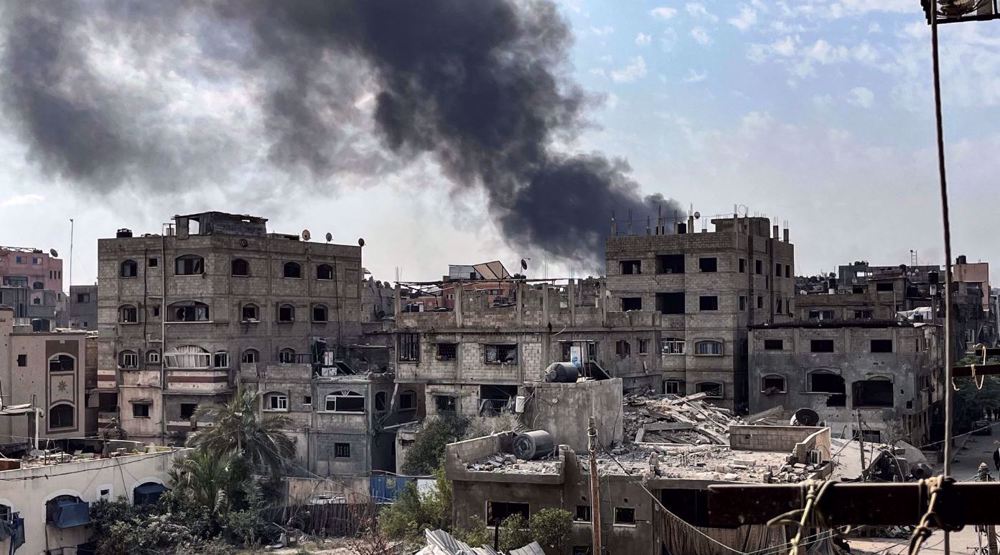AhlulBayt News Agency: The present situation in Lebanon has become worse than during the 2006 war, according to the United Nations humanitarian agency.
The United Nations Office for the Coordination of Humanitarian Affairs (OCHA) said on Saturday that “the humanitarian situation in Lebanon has reached levels that exceed the severity” of the last Israeli war on Lebanon in 2006, with many more now killed and displaced.
The situation has escalated anew, due to the Israel regime’s forced displacement orders for the residents of eastern Baalbek and southern Nabatieh, OCHA said.
The toll on the population has been exacerbated by the destruction of critical infrastructure, including healthcare, it added.
“Humanitarian structures are also struck,” said Filippo Grandi, head of the UN refugee agency, UNHCR, in a social media post early Saturday.
“Even fleeing (and taking care of those who flee) are becoming difficult and dangerous as the war continues to spread,” he said.
The Lebanese government says some 1.2 million people have been displaced, while the International Organization for Migration (IOM) reports said at least 842,648 people had been forced to flee their homes.
The 33-day Israeli war on Lebanon in 2006 killed 1,191 people, while more than 900,000 fled their homes, according to the International Committee of the Red Cross.
The statement came as the Lebanese Health Ministry updated the death toll from Israeli attacks on the country to at least 2,968 people.
Another 13,319 have been wounded, mostly women and children.
Prior to the 33-day war, the Israeli forces had invaded Lebanon two times, in 1978 and 1982.
In response, each time the United Nations Security Council called on the Tel Aviv regime to pull out the Israeli forces from Lebanon and established the United Nations Interim Force in Lebanon (UNIFIL).
Lebanese resistance movement Hezbollah swiftly opened a support front for Palestinians in Gaza following Israel’s October 7, 2023 attack against the besieged territory, which has so far killed over 43,000 people, most of them women and children.
Israel and Hezbollah have been engaging in frequent exchanges of fire across the border almost daily for a year when the Israeli attacks on Lebanon intensified in September, causing significant casualties and destruction in the area.
/129
The United Nations Office for the Coordination of Humanitarian Affairs (OCHA) said on Saturday that “the humanitarian situation in Lebanon has reached levels that exceed the severity” of the last Israeli war on Lebanon in 2006, with many more now killed and displaced.
The situation has escalated anew, due to the Israel regime’s forced displacement orders for the residents of eastern Baalbek and southern Nabatieh, OCHA said.
The toll on the population has been exacerbated by the destruction of critical infrastructure, including healthcare, it added.
“Humanitarian structures are also struck,” said Filippo Grandi, head of the UN refugee agency, UNHCR, in a social media post early Saturday.
“Even fleeing (and taking care of those who flee) are becoming difficult and dangerous as the war continues to spread,” he said.
The Lebanese government says some 1.2 million people have been displaced, while the International Organization for Migration (IOM) reports said at least 842,648 people had been forced to flee their homes.
The 33-day Israeli war on Lebanon in 2006 killed 1,191 people, while more than 900,000 fled their homes, according to the International Committee of the Red Cross.
The statement came as the Lebanese Health Ministry updated the death toll from Israeli attacks on the country to at least 2,968 people.
Another 13,319 have been wounded, mostly women and children.
Prior to the 33-day war, the Israeli forces had invaded Lebanon two times, in 1978 and 1982.
In response, each time the United Nations Security Council called on the Tel Aviv regime to pull out the Israeli forces from Lebanon and established the United Nations Interim Force in Lebanon (UNIFIL).
Lebanese resistance movement Hezbollah swiftly opened a support front for Palestinians in Gaza following Israel’s October 7, 2023 attack against the besieged territory, which has so far killed over 43,000 people, most of them women and children.
Israel and Hezbollah have been engaging in frequent exchanges of fire across the border almost daily for a year when the Israeli attacks on Lebanon intensified in September, causing significant casualties and destruction in the area.
/129

